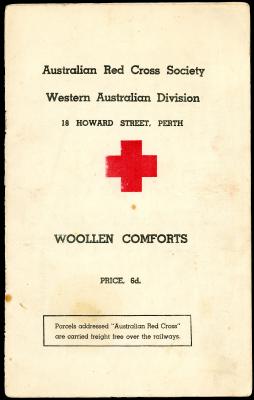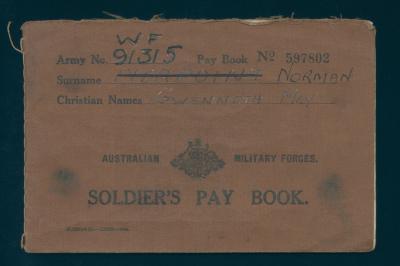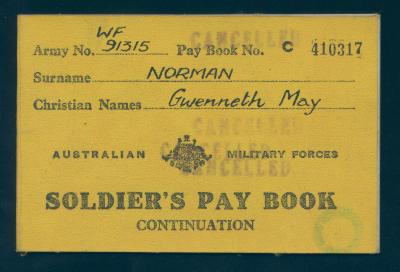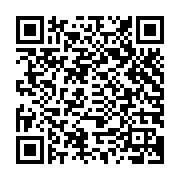First World War “Lemon Squeezer” Hat with 2nd South Canterbury Regiment Brass Badge
c. 1914Felt hat originally Khaki green now faded with “lemon Squeezer peak. Good condition although worn at edges and showing a few small holes and liquid marks on surface. Internal leather hat band is worn with signs of sweat/ grease and overall wear. Hat band puggaree is worn and faded with one larger brown ribbon and a smaller red on in the centre of the brown ribbon.
A badge in the shape of a Maltese Cross with a kiwi in the centre boss. The kiwi is surrounded by the words NZI. 2nd South Canterbury Regiment. A banner below the cross bears the words PRO PATRIA.
The lemon-squeezer hat became recognised as identification for New Zealand troops all over the world in times of peace and war for 44 years. Whilst it may date back to 1911, Prior to September 1916 the uniform hat was not standardised and the majority of soldiers who left in 1914 wore the New Zealand flat brimmed slouch type felt hat. This changed with Order 135/1916 Dress, which brought the lemon squeezer into general use.:
“Slouch hat, wearing of. The slouch hat will in future be worn by all ranks as follows – brim horizontal – crown peaked”
The New Zealand Army placed the lemon-squeezer in abeyance from service in 1960. However, it continued to be used by the Northern Military District, Territorial Force, Royal New Zealand Artillery (RNZA) Band until 1972. On December 1, 1976, the then Chief of General Staff, MAJGEN Gen Ron D. P. Hassett, reinstated the lemon squeezer as the ceremonial headdress for the NZ Army. It is also worn by officer cadets in training, and on occasions, by the New Zealand Army Band.
Item attributed to Soldier named Steel.
The Canterbury Battalion was formed on the outbreak of war recruited from the four existing Territorial Regiments in the province: 1st (Canterbury), 2nd (South Canterbury), 12th (Nelson) and 13th (North Canterbury and Westland). The battalion arrived in Egypt with the New Zealand Infantry Brigade in December 1914. The 2nd South Canterbury Regiment, was disbanded in 1921
The puggaree (hatband) has the unit badge at the front. The badge has the form of a Maltese Cross, symbolising knightly (military) virtues. It also shows a kiwi symbolising New Zealand. The Latin motto 'Pro patria' means ‘For country’.
Details
Details
“N.Z.I. (2nd SOUTH CANTERBURY) REGIMENT / PRO PATRIA”
Open in Google Maps
Nearest geotagged records:
- Invalid Cup (0km away)
- Peter LONEY Letter (0km away)
- Ellis SILAS Water Colour Painting (0km away)
- Engraved Japanese Water Bottle belonging to Robert George Staunton RENNIE WX7493 (0km away)
- Enlistment Poster (0km away)
- W. D. & H. O. Wills Lace Flag Cigarette Cards (0km away)
- First world War Picture Postcard (0km away)
- Photograph of the Japanese surrender to Australia on 13 September 1945. (0km away)
- Engraved Tin given to Major Arthur Robinson HOME WX11151 (0km away)
- Martini-Henry action (0km away)
Nearby places: View all geotagged records »
Princess Royal Fortress Military Museum
Princess Royal Fortress Military Museum
Other items from Princess Royal Fortress Military Museum
- Australian Red Cross Society Western Australian Division ‘Woollen Comforts’ booklet from Second World War
- Second World War “Soliders Pay Book” – WF91315 NORMAN Gwenneth May
- Second World War Solider’s Pay Book Continuation - WF91315 NORMAN Gwenneth May
- Second World War Certificate of Discharge issued to WF91315 Sergeant Gwenneth May NORMAN
- Second World War AWAS Epaulette Title issued to WF91315 Sergeant Gwenneth May NORMAN (nee PIERPOINT)
- Second World War Rising Sun Collar Badge issued to WF91315 Sergeant Gwenneth May NORMAN
- Second World War Major Rank Badge
- Australia's Fighting Sons of the Empire
- First World War Medal Trio of Lance Corporal Frank BEER 512
- First World War German Shrapnel Shell Fragment
- First World War Metal Fragment
- 1967 ANZAC Commemorative Medallion and Certificate of Pte. William John BEER 1509





